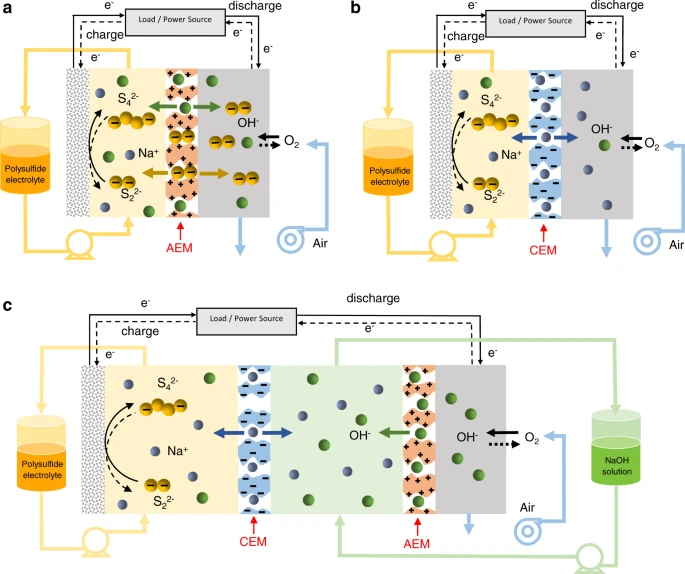Science Daily May 3, 2022
Polysulfide-air redox flow batteries demonstrated great potential for long-duration energy storage technologies that can be deployed at grid scale. However, the crossover of polysulfide is one significant challenge. Researchers in the UK have developed a stable and cost-effective alkaline-based hybrid polysulfide-air redox flow battery where a dual-membrane-structured flow cell design mitigates the sulfur crossover issue. Moreover, combining manganese/carbon catalyzed air electrodes with sulfidated Ni foam polysulfide electrodes, the redox flow battery achieves a maximum power density of 5.8 mW cm−2 at 50% state of charge and 55 °C. Compared with the best results obtained to date from a polysulfide-air redox flow battery, the new design was able to provide significantly more power, up to 5.8 milliwatts per centimetre squared. They calculated the energy storage cost to be around $2.5 per kilowatt hour…read more. Open Access TECHNICAL ARTICLE

Schematic diagrams of alkaline polysulfide/air redox flow battery systems. Credit: Nature Communications volume 13, Article number: 2388 (2022)